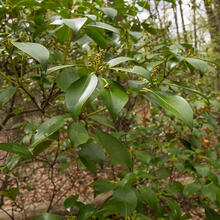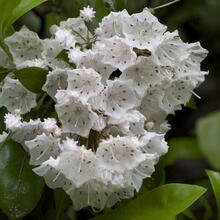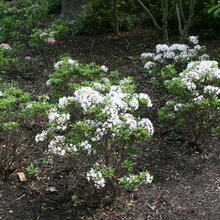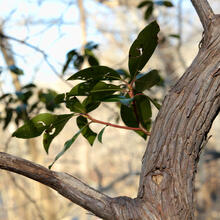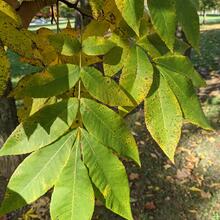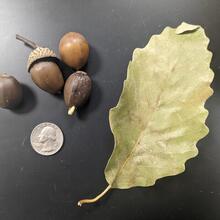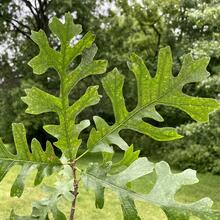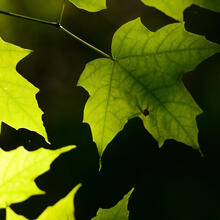Kalmia latifolia
Ericaceae
Evergreen, multi-trunked shrub/small tree with large showy flowers. Frequently damaged by deer browse.
Summary
 Climate Tolerance
Climate Tolerance
NA
Wildlife Benefits
Nectar/pollen source for bees, butterflies, hummingbirds
Pollination Type
Pollinator
Plant Hardiness Zones
4 to 9
# Butterfly/Moths that use as host
Unknown
Bloom Time
Summer (Jun-Jul)
 Shade/Sun Tolerance
Shade/Sun Tolerance
Part Shade: Receives 2-4 hours of direct sunlight, preferably in the morning
 Maximum Height
Maximum Height
Small (15-40 ft)
 Growth Rate
Growth Rate
Slow: 1 ft or less per year
 Soil Type
Soil Type
Sand: Large/coarse particles. Short moisture retention and low nutrient availability.
Rocky: Large pieces of gravel and rock. Short moisture retention and low nutrient availability.
 Soil Moisture Tolerance
Soil Moisture Tolerance
Moist: Soil can remain damp and does not normally retain standing water
Root - Fungal Association
Ectomycorrhizae: Symbiotic relationship with fungi that exist on outside of plant root cells, facilitating nutrient uptake
Ericoid:
Pest & Pathogen Risks
Low; cosmetic-leaf blight
 Urban Stress Tolerance
Urban Stress Tolerance
Low: Tree will not grow well in the urban environment
Drought Tolerance
Tolerant: Tree will not become stressed during periods of drought
Coefficient of Conservatism
7
Native Status
OH-Native: Species is native to Ohio
NatureServe G-rank
G5
Plant Community Type
- Beech Mixed: Absent
- Oak Mixed: Absent
- Alluvial: Absent
- Red Maple Mixed: Absent
- Ruderal: Absent
Bloom Color
Pink
White
Form
Shrub
 Lifespan
Lifespan
Long: Greater than 250 years
Soil pH
Acidic (pH 4.5-5.5)
Wetland Indicator Status
FACU: Facultative Upland, usually occurs in non-wetlands, but may occur in wetlands
Soil Compaction Tolerance
Sensitive: Tree will become stressed from soil being compacted
Heat Tolerance
Tolerant: Tree will not become stressed for increased temperature due to urban heat island effects
Salt Tolerant
Sensitive: Intolerant to either aerial salt spray and/or salt present in soil
Native County Status
Not Native to NE Ohio
IUCN Red List Assessment
Least Concern
